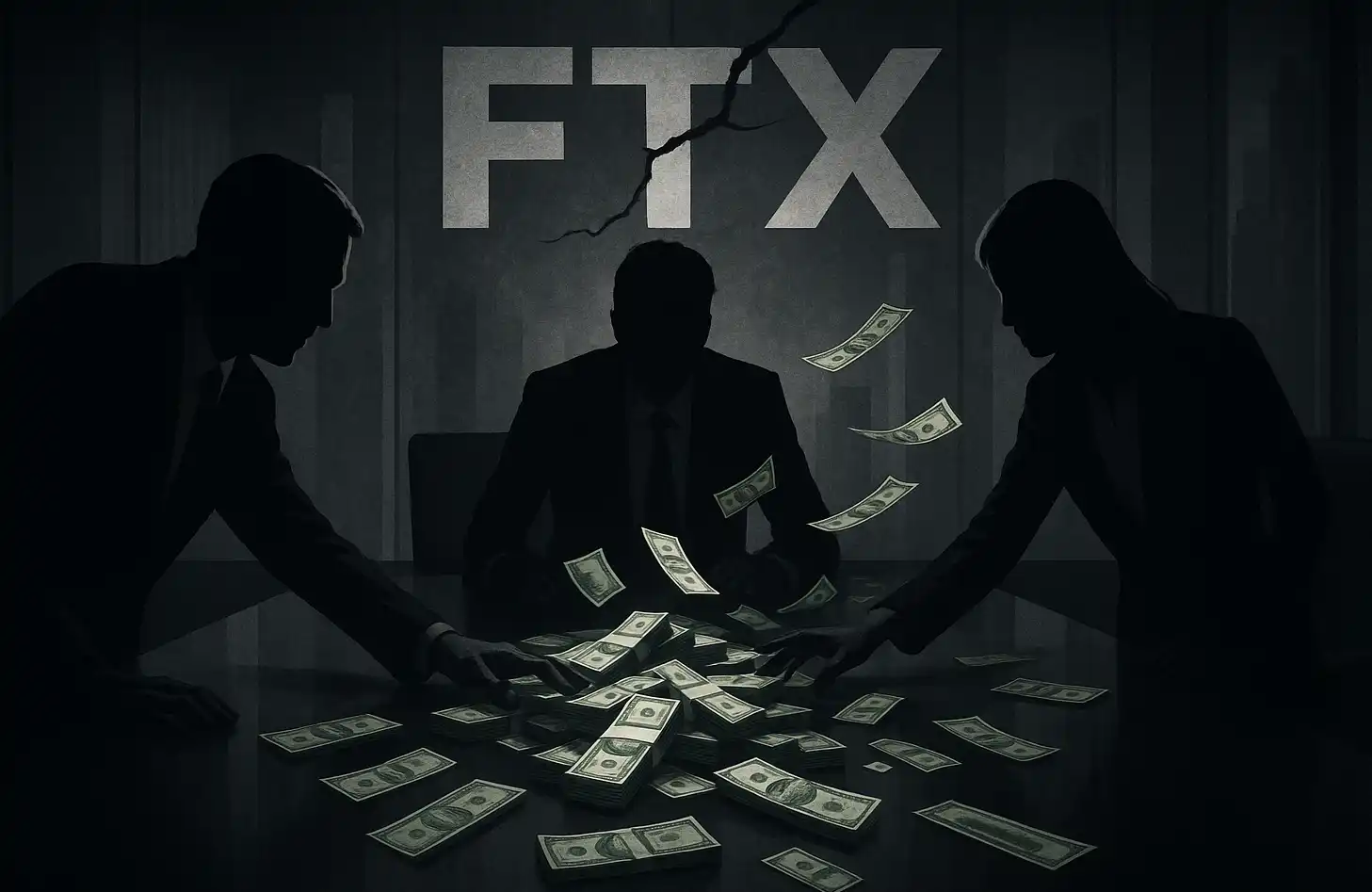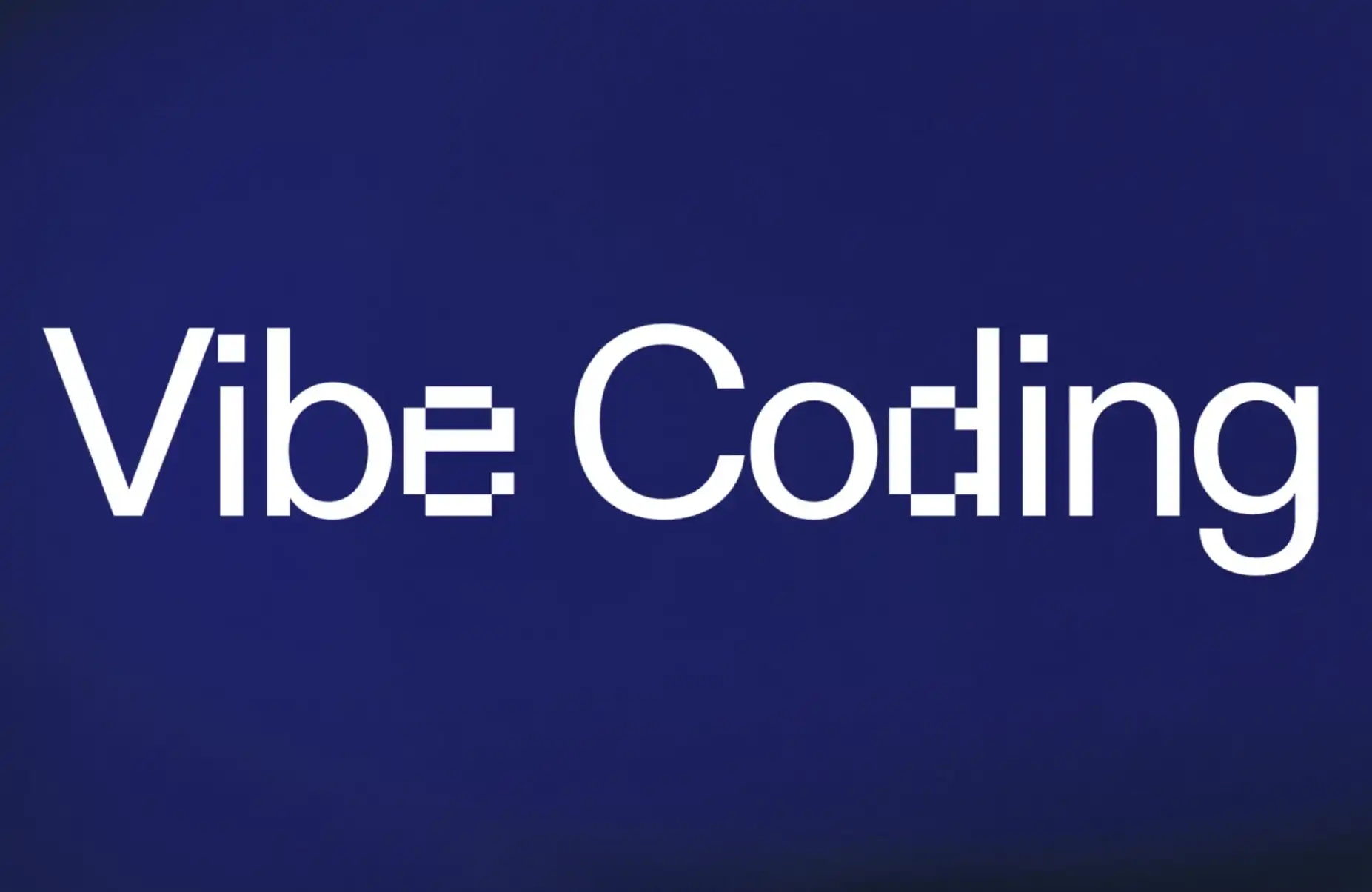Trend Research: Undercurrents Surging, ETH Price Discovery Entering Eve of Breakout
Original Article Title: "Approaching Storm, Market Collaboration Will Drive ETH to Achieve Price Discovery"
Original Article Author: Alfred R., Trend Research Analyst
Lately, with the strong performance of cryptocurrencies such as CRCL and HOOD, many investment friends have raised several valuable questions: "Where will the market's increment come from if the stablecoin law is indeed passed?" "Why do tokens like SBET and BMNR surge when riding the Ethereum hype train?" "Is there any connection between RWAs and Ethereum?" "Why are you optimistic about ETH regardless of short-term price fluctuations?" In response to different questions, we have provided fragmented answers. This article will organize them systematically, provide a summary from a fundamental logic and longer-term perspective, and serve as complementary content to previous reports.
"The rise of ETH is not driven by the purchase or promotion of one or two institutions but is the collective choice of mainstream institutions during a transformative layout, and the tipping point of trend change is approaching."
1. Starting From Data
Stablecoins have achieved a development speed beyond market expectations, with a total market value reaching a historic high of $2.583 trillion. The US "Genius" bill has passed the Senate vote and entered the Republican-controlled House of Representatives stage. Trump has urged the US stablecoin bill to complete the legislative process before the August congressional recess. The Hong Kong "Stablecoin Regulation" has already been passed and will take effect on August 1. US Treasury Secretary Bennett predicts that if the US stablecoin bill is passed, the market value of stablecoins will grow rapidly to over $20 trillion in the next few years (more than 10x of the current value). Asset tokenization is one of the fastest-growing markets apart from stablecoins. RWA has grown from $5.2 billion in 2023 to the current $24.3 billion, a 460% increase.

Currently, the total market value of traditional finance exceeds $400 trillion, the crypto market cap is $3.3 trillion, stablecoin market cap is $0.25 trillion, and RWA market cap is $0.024 trillion. According to industry forecasts from Standard Chartered Bank, Redstone, RWA.xyz, etc., by 2030–2034, 10%-30% of global assets may be tokenized, with a scale of $40–120 trillion. The total market value of RWAs is expected to expand by over 1,000 times from its current value.
What other businesses are the most proactive BlackRocks, who are driving stablecoins and cryptocurrency ETFs?
(1) BlackRock BUIDL Fund: The BUIDL (BlackRock USD Institutional Digital Liquidity Fund) is a blockchain-based tokenized US dollar-pegged fund launched by BlackRock. It uses tokenization to represent underlying assets (mainly US Treasury bonds), with current AUM reaching $2.86 billion (accounting for 11.7% of the RWA market), and 95% of funds deployed on Ethereum.

(2)Securitize: An asset tokenization company led by BlackRock and Jump Capital, with participation from institutions such as Coinbase. In addition to collaborating with BlackRock to issue BUIDL, Securitize has also partnered with multiple traditional financial institutions to issue various tokenized products. These partnerships include tokenizing private equity funds with Hamilton Lane, exploring the issuance of tokenized investment products with VanEck, tokenizing a portion of Apollo's private credit and alternative investment products, and assisting KKR in fund tokenization. The market value of tokenized products issued through Securitize has reached $3.7 billion (15% of the RWA market), with 80% deployed on Ethereum.
(3)Franklin Templeton's BENJI Fund: The BENJI Tokenized Fund is a tokenized fund launched by Franklin Templeton, converting traditional assets (money market funds or bonds) into digital tokens to achieve asset digitization and fractionalization. This allows small-scale investors to participate while also supporting smart contract functionality for distribution of returns or reinvestment. Currently, the AUM is $743 million (3% of the RWA market), with 59% of funds deployed on Stellar and 10% deployed on Ethereum.
There are many more traditional financial institutions advancing asset on-chain and asset tokenization businesses. The current adoption by institutions represents the culmination of many years of infrastructure development finally transitioning to production-scale deployment.

II. Reexamining RWAs
RWA (Real-World Assets) refers to the digitization of tangible or intangible real-world assets (such as real estate, art, bonds, stocks, commodities, etc.) through blockchain technology or tokenization, mapping them to digital tokens or assets on the blockchain. Broadly speaking, in the industry, RWAs mainly correspond to any asset outside of native blockchain assets, where on-chain and tokenization of any asset occur, with ownership, circulation, and settlement of underlying assets all completed through blockchain.
Tokenization offers the following structural advantages:
1. Programmability - Asset Management Innovation Driven by Smart Contracts: Programmability refers to encoding asset rules, conditions, and execution logic into automated, verifiable code through smart contracts on the blockchain. Tokenized assets can embed functions such as dividends, redemption, and collateralization, eliminating manual intervention. This transition shifts assets from static holding to dynamic management and from manual data transmission to on-chain automated updates.
2. Settlement Revolution - Efficiency Enhancement and Risk Control: Tokenization achieves peer-to-peer instant settlement through blockchain, replacing the long-standing T+2 settlement cycle that has plagued the traditional financial system for years. Transaction parties can transfer ownership directly through tokens, eliminating the need for centralized intermediaries, thereby reducing counterparty risk and capital requirements.
3. Liquidity Revolution - The Core of Traditional Finance Embracing Crypto: Tokenization divides traditionally illiquid assets (such as real estate, private equity, etc.) into standardized small tokens, which can be traded on secondary markets. When combined with a maturing DeFi ecosystem, this significantly enhances asset liquidity. The blockchain's unique 24/7 trading environment further amplifies this effect.
Each time an asset goes on-chain, settlement efficiency improves, and idle assets are utilized by DeFi. "The faster the velocity of value settlement, the higher the frequency of capital reinvestment, thereby further expanding the overall economic scale. Business models will no longer rely on fees for the [liquidity] process but will create new revenue streams through a [momentum] effect" (-Sumanth Neppalli). This is the essence of traditional finance integrating with crypto.
4. Global Accessibility - Breaking Geographic Fragmentation of Capital: Tokenization, leveraging the distributed nature of blockchain, allows global investors to access tokenized assets via the internet without the need for complex cross-border intermediaries or local accounts. This significantly expands the investor base and reduces distribution costs. The global application of stablecoins is the best testament to this, and this trend is extending to more markets like the stock market.
Which assets are being tokenized?

1. Private Credit - The Largest RWA Tokenization Sector: Contrary to common perception, private credit is currently the largest market for asset tokenization, with a total size of $14.3 billion, accounting for 58.8% of the total RWA size. Figure, Tradable, and Maple are actively providing loans of $10.6 billion, $2 billion, and $800 million, respectively.
2. Government Bonds - The Starting Point of Traditional Institution Tokenization: The tokenized government bond market has reached a size of $7.4 billion, accounting for 30% of the total RWA size. Representative examples include BlackRock's BUIDL, Franklin Templeton's BENJI, Superstate's USTB, and Ondo Finance's USDY. Traditional financial institutions are basing tokenized government bonds to explore the development of on-chain derivative financial products and DeFi integration.
3. Tokenization of the Stock Market is Accelerating: On June 30th, crypto exchanges Kraken and Bybit announced the tokenization of U.S. stocks and ETFs through xStocks, enabling 24/7 trading. While these are not blockchain-native stocks, they allow participation in spread trading through stock tokenization, breaking the geographical boundaries of the U.S. stock market. Robinhood announced it is building "Robinhood Chain" on the Arbitrum blockchain to support decentralized management of future asset ownership. This marks its transition from a traditional brokerage to a blockchain-native platform, with stock tokenization divided into three stages to leverage blockchain for composability advantages. Meanwhile, Coinbase has positioned tokenized stocks as a "top priority," with its Chief Legal Officer Paul Grewal actively seeking approval from the U.S. Securities and Exchange Commission (SEC) to offer blockchain-based stock trading services. It will use its Base Layer 2 network as potential infrastructure for future tokenized stock settlements. Perhaps this year, we will witness these trailblazers launching blockchain-native popular stocks.
4. Commodity Tokenization Primarily with Gold: Gold accounts for nearly 100% of tokenized commodity. Paxos Gold (PAXG) leads with a market value of around $850 million.
5. Exploring Private Equity Tokenization: Private equity is the ultimate goal of tokenization, a technology that can address decades of structural issues and transform the traditionally illiquid private equity into high liquidity.
III. Stablecoin-RWA-DeFi
Stablecoin is the most critical underlying infrastructure for integrating traditional finance into the blockchain, making currency programmable and decentralized, serving as the foundation for the circulation and settlement of all on-chain financial assets. Dr. Xiao Feng, Chairman of Hashkey Group, and Professor Meng Yan once shared in an interview, "The U.S. Presidential team and Congress are quite frank and transparent about the motivation for stablecoin legislation. First, to modernize the U.S. payment and financial system; second, to consolidate and strengthen the status of the U.S. dollar, creating trillions of demand for U.S. Treasury bonds in a few years." "Bitcoin as a national reserve is secondary for the United States, stablecoin tied to the U.S. dollar is the primary, a core interest of the United States."
The rapid development of RWA in this round is benefiting from institutional compliance continuously exploring new integration methods, propelling the legislation of digital asset market structure, when stablecoin legislation and market structure legislation are completed, a large number of assets will be rapidly brought on-chain, with transactions, yields, settlements, and other processes running on the native blockchain, using stablecoins as the base currency unit and value carrier.
With a large number of assets on-chain, DeFi will begin to play a role, integrating newly onboarded assets with increasingly mature DeFi protocols to achieve efficiency, automation, and compliance. Driving the creation of derivative products and the generation and distribution of high liquidity yields. This period may be another vibrant development opportunity for the entire DeFi ecosystem since DeFi Summer.
Case Studies of RWA and DeFi Integration
1. Securitize Connecting to the DeFi Ecosystem through sTokens:
Securitize, the world's largest tokenization asset issuer, issues native tokenized securities that, due to compliance considerations, do not support direct use in DeFi protocols. The tokens must first be deposited into an sVault to mint DeFi-compatible versions called sTokens, enabling them to integrate into the existing DeFi ecosystem.
BlackRock BUIDL and Euler Protocol: Securitize's sBUIDL (a derivative token of BUIDL) has been integrated into the Euler lending protocol on Avalanche. After depositing sBUIDL into the sToken Vault, holders can borrow other assets while continuing to receive daily returns from BUIDL.
Apollo ACRED and Morpho Protocol: The sToken version of ACRED (sACRED) runs on Polygon PoS through Morpho, allowing holders to borrow USDC using sACRED as collateral, automatically reinvesting the borrowed funds to amplify returns.

2. Ethena's USDtb Merge with BUIDL for Stable Floor Yield
The Ethena Risk Committee has approved USDtb as the primary reserve asset when the Delta-neutral financing strategy reaches a local minimum in BUIDL exposure. 90% of USDtb's reserves are held in BlackRock's BUIDL Fund, serving a dual purpose: providing low-risk collateral for margin trading on centralized exchanges and offering compliant treasury exposure in adverse funding environments.
"The addition of USDe to USDtb support has indirectly catalyzed the explosive growth of complex DeFi yield strategies, particularly facilitating Pendle's Principal Tokens (PT) and Yield Tokens (YT) robust money markets—traditional finance views these tools as interest rate markets. During periods of negative or significantly compressed cryptocurrency derivative funding rates, USDtb support has provided crucial yield floor stability (typically around a 4–5% annual rate). This predictable minimum yield foundation is vital for the valuation of PT tokens and AAVE's oracle system, enabling a more accurate pricing model for zero-coupon bonds and a safer liquidation mechanism."
Currently, traditional financial institutions, starting from stablecoins and tokenizing government bonds, are exploring on-chain derivative financial product development and the integration of DeFi compliance.
4. ETH Remains the Mainstream Choice for Institutions

From the current data, ETH is still the primary public chain for institutional asset tokenization, with a tokenized market cap on ETH of $7.5 billion, accounting for 58.41% of the total market size. The tokenized market cap on ETH's L2 ZKsync Era is $2.245 billion, representing 17.47%, and Aptos, ranked first among other public chains, has a tokenized market cap of $540 million, approximately 4.23%.
When considering the underlying logic, institutions prefer ETH as the mainstay for asset tokenization for three reasons:
1. Ethereum has the highest security level among all public chains currently. With a decade of security records, it has never experienced a major issue such as a crash. As Ethereum transitions from PoW to PoS, its ability to perform core architecture upgrades without downtime has been likened to "changing the engine of a plane while it's flying." The stability demonstrated by its strong technical foundation and organizational integration capabilities aligns with institutional cautiousness in venturing into new business landscapes.
2. Possesses the most mature DeFi ecosystem and the best liquidity, as well as the most mature DeFi protocols. Most innovative product mechanisms are mostly found on Ethereum. Institutions that go on-chain with ETH can quickly access a mature DeFi system and benefit from the best liquidity.
3. Features extremely high decentralization and global business reach, serving as a balancing center for large institutions and global investments. One of the key reasons why stablecoins are strategically important to the United States is that stablecoins achieve decentralized global reach on-chain, breaking down previous barriers of national currency based on political borders. They propel dollar equivalents globally through the network. Asset tokenization follows the same principle. For example, the recent tokenization of U.S. stocks allows people who were previously unable to invest or trade U.S. stocks to bypass national barriers and participate in stock trading via the blockchain. ETH, benefiting from the best liquidity and influence, is the preferred public chain for global business reach. Additionally, due to its decentralized nature, it serves as a balancing center for large institutions and global investors. Major institutional entities of sovereign nations would not be willing to choose a public chain completely controlled by another country to issue products or participate in major financial activities.
See what Etherealize has to say
The Ethereum Foundation (EF) has undergone significant functional differentiation and professionalization, restructuring internally into three major business groups, while also segregating specific functions to external organizations, giving rise to Etherealize. Positioned as the Ethereum ecosystem's "institutional marketing and product pillar," Etherealize focuses on facilitating connections with traditional finance and Wall Street to accelerate Ethereum's adoption in institutions.
Etherealize believes that ETH should not be evaluated as a tech stock, but rather as a new type of asset: ETH is digital petroleum—a vital asset providing power, security, and reserves for the new financial system of the internet.
"The traditional financial system is at the beginning of a structural transformation from analog infrastructure to a digital-native architecture. Ethereum is poised to become the foundational software layer—similar to an operating system like Microsoft Windows—upon which the global new financial system will be built.
When all this comes to fruition, ETH will become a foundational asset of a comprehensive global platform that will encompass the future of finance, tokenization, identity, computing, artificial intelligence, and other fields. This inherent complexity makes defining ETH more challenging, especially compared to simpler value storage assets like Bitcoin—but it also makes ETH strategically more valuable and implies that ETH has greater long-term potential."
Furthermore, ETH is not just a cryptocurrency; it is a multi-functional asset, with roles including: computational fuel; yield-bearing value storage asset; primary settlement collateral; deflationary asset; representation of tokenized economic growth; reserve trading pair; strategic reserve asset.
Therefore, ETH cannot be accurately valued through discounted cash flow analysis. Instead, ETH must be viewed from the perspective of strategic value storage and utility-driven scarcity. ETH powers the digital economy, secures the digital economy, captures value from the growth of the digital economy, and possesses inherent scarcity due to its dynamic supply and issuance cap. As the global economy transitions to a tokenized infrastructure, ETH will become indispensable, serving not only as fuel but also as the native asset of the future financial system's currency and settlement layer.
Why is ETH lagging behind BTC?
The answer is simple: Bitcoin's narrative has been embraced by institutions, while Ethereum's narrative has not yet. In contrast, Ethereum's value proposition is more difficult to define—not because it is weaker, but because it is broader. Bitcoin is a single-use value storage asset, while Ethereum is the programmable foundation supporting the entire tokenized economy.
The process to accelerate ETH's repricing is underway:
1. Surging Demand: Institutions have started rapidly adopting and deploying tokenized assets and financial infrastructure on Ethereum at a large scale, as evidenced by the data in this article.
2. Accelerated Native Crypto Yield Demand: With the trend of institutions massively building on ETH, Ethereum ETF staking is only a matter of time, and the emergence of institutional physical purchase/redemption models will also significantly increase institutional interest in ETH staking yield.
3. Strategic Accumulation of ETH: A competition is brewing within the Ethereum ecosystem to hoard ETH as a currency premium value storage asset. Recently, the US-listed company Bitmine Immersion Technologies raised $250 million to launch an ETH financial strategy, driving its stock price from $4 to a peak of $74 in two days, a surge of over 180%.
4. ETH as Institutional Treasury Asset: ETH's unique features—original collateral, neutrality, yield, and global utility—make it the preferred reserve asset for institutions globally.
In simple terms, ETH is not the only long-term choice for institutional entry into blockchain, but it is currently the optimal solution for large-scale asset onboarding. Through data, examples, underlying logic, and recent Big News, the trend of ETH's revaluation is on the horizon.
References
1. "Beyond Stablecoins"
2. "Real-World Assets in Onchain Finance Report"
3. "The Bull Case for ETH"
4. "Dr. Xiao Feng's Dialogue: USD Stablecoins and RWA"
Welcome to join the official BlockBeats community:
Telegram Subscription Group: https://t.me/theblockbeats
Telegram Discussion Group: https://t.me/BlockBeats_App
Official Twitter Account: https://twitter.com/BlockBeatsAsia
 Forum
Forum OPRR
OPRR Finance
Finance
 Specials
Specials
 On-chain Eco
On-chain Eco
 Entry
Entry
 Podcasts
Podcasts
 Activities
Activities








